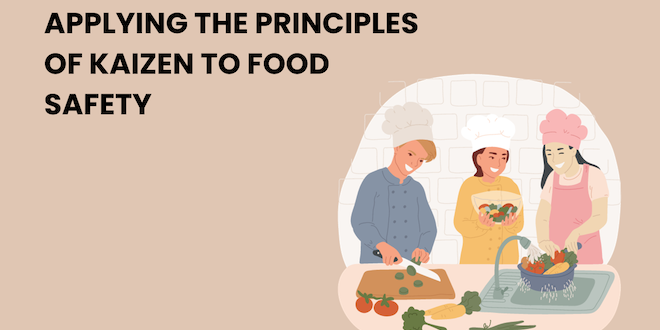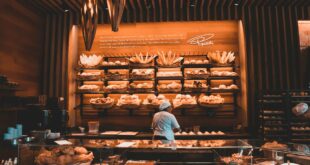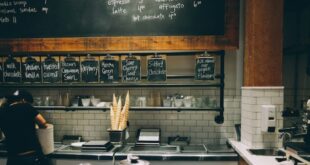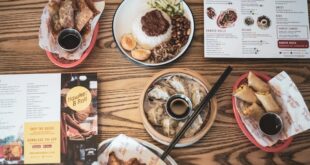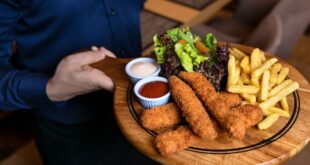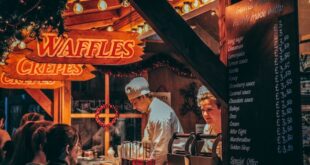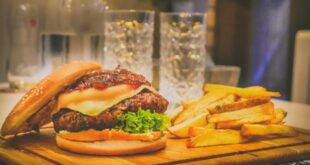Last Updated on January 12, 2024
Maintaining food safety is paramount, as any negligence can lead to severe consequences. Ensuring that the food we consume is free from contaminants is a fundamental responsibility of the food industry. To achieve this, many organisations follow established principles and methodologies, one of which is Kaizen. In this blog, we will explore how implementing Kaizen’s principles can help to improve food safety continuously. We’ll delve into the concept of Kaizen, its compatibility with Food Safety Principles, and how organizations can integrate it into their Food Safety Training programs.
What is Kaizen?
Before we dive into the application of Kaizen in food safety, let’s first understand what Kaizen is. Kaizen is a Japanese term that means “change for better” or “continuous improvement.” It’s a philosophy and methodology that aims to improve processes, products, or services incrementally over time. Kaizen emphasises the importance of making small, sustainable changes on an ongoing basis rather than pursuing large, disruptive improvements.
The Compatibility of Kaizen with Food Safety Principles
Food safety principles, including HACCP (Hazard Analysis and Critical Control Points), have been developed to ensure the safety of food products through the identification and control of potential hazards. These principles are in line with the philosophy of Kaizen, as both have the same objective, which is to achieve continuous improvement. Here’s how Kaizen complements food safety principles:
Continuous Monitoring
Kaizen encourages organisations to monitor processes and outcomes regularly. In the context of food safety, this means constantly monitoring critical control points to identify potential risks. By doing so, organisations can detect issues early and take corrective actions promptly, preventing food safety incidents.
Employee Involvement
Kaizen promotes the involvement of employees at all levels of an organisation in the improvement process. Similarly, food safety training emphasises the importance of educating and engaging employees in safe food handling practices. When employees are actively involved, they are more likely to identify food safety hazards and suggest improvements.
Data-Driven Decision-Making
Both Kaizen and food safety principles rely on data to drive decision-making. In food safety, data is used to identify trends, track compliance, and assess the effectiveness of control measures. Kaizen encourages organisations to use data to measure the impact of improvements and make informed decisions about further changes.
Problem Solving
Kaizen encourages a problem-solving mindset, where employees are empowered to identify and solve issues as they arise. This aligns with food safety principles, which require prompt action when hazards are identified. By fostering a culture of problem-solving, organisations can address food safety concerns swiftly and effectively.
Integrating Kaizen into Food Safety Training
Now that we’ve established the compatibility of Kaizen with food safety principles let’s explore how organisations can integrate Kaizen into their food safety training programs:
Kaizen Training for Food Safety Teams
Start by providing Kaizen training to your food safety teams. This training should focus on the key principles of Kaizen, such as continuous improvement, employee involvement, and data-driven decision-making. Food safety professionals can then apply these principles to their daily tasks, making incremental improvements to processes and controls.
Promote a Culture of Continuous Improvement
Encourage all members of your organisation to continuously improve food safety. Use Kaizen tools and methodologies, such as the Plan-Do-Check-Act (PDCA) cycle, to guide improvement initiatives.
Regular Food Safety Audits
Conduct regular food safety audits to identify areas for improvement. Use the findings from these audits as a starting point for Kaizen projects. Encourage food safety teams to establish measurable goals and regularly monitor progress.
Feedback and Communication
Foster open communication channels for reporting food safety concerns and improvement suggestions. Create a feedback system for employees to share observations and ideas. Use the feedback to identify hazards and implement improvements.
Training and Skill Development
Invest in ongoing food safety training for your employees. Ensure that they have the knowledge and skills necessary to identify and address food safety risks. Kaizen can be applied to the training process itself, making continuous improvements to training materials and methods.
Measurement and Data Analysis
Use data to measure the effectiveness of food safety controls and procedures. Implement key performance indicators (KPIs) to track food safety outcomes. Kaizen principles encourage organisations to use data to drive improvements continually.
Final Thoughts
The principles of Kaizen offer a valuable framework for achieving continuous improvement. By integrating Kaizen into food safety training programs, organisations can foster a culture of vigilance, empower employees to identify and address food safety hazards and ensure the ongoing safety of the food supply.
Equipping employees with food safety training is critical to identifying and mitigating risks. By combining the principles of Kaizen with food safety principles, organisations can take a proactive approach to food safety, reducing the likelihood of incidents and ensuring that consumers can trust the safety of the food they consume.
The application of Kaizen to food safety is not just a best practice; it’s a commitment to excellence and a safer food supply for all. Organisations can maintain the highest food safety standards by continually improving their processes and practices.
You may also like:
Main Advantages of commercial refrigeration for restaurants
10 Tips To Use Direct Mail To Promote Your Restaurant
Kitchen Equipment needed to Open a Restaurant
 Travel for Food Hub The Food Blog for Travel Lovers
Travel for Food Hub The Food Blog for Travel Lovers

